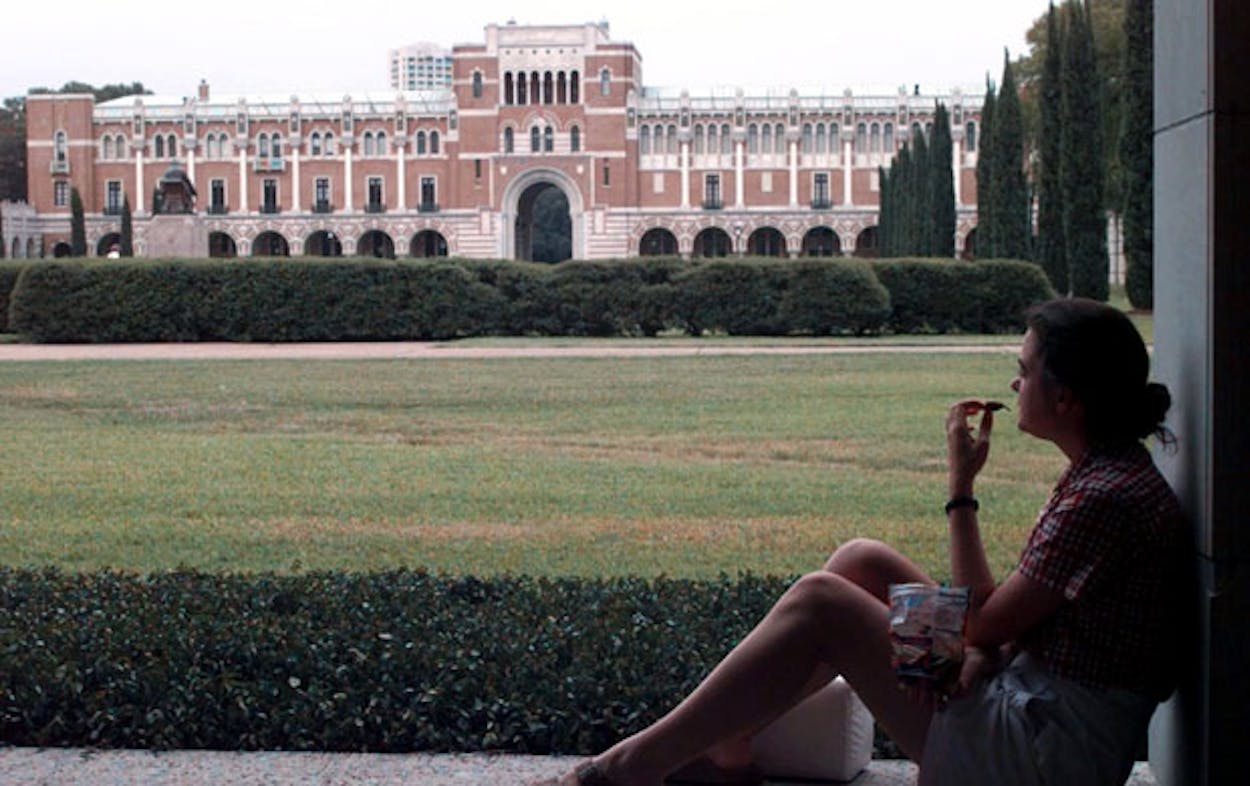What Texas institution boasts a $4.5 billion endowment, an annual Beer Bike Race, and is 100 years old? That’s right, Houston’s William Marsh Rice University has had its doors open to students for a century.
Since its founding in 1912, Rice has become one of the most prestigious universities in the country, ranked this year by U.S. News and World Report as the 17th best college in the nation. Since Rice is the alma mater of a great many Texans, the TM Daily Post has decided to look back at five moments from the school’s history on the occasion of its centennial.
1. Founding by Edgar Odell Lovett. The mathematician and education administrator was working as the head of Princeton’s Department of Mathematics and Astronomy in 1907 when he was recommended by Princeton’s president, Woodrow Wilson, to become the president of the Rice Institute, which was under construction at the time. He became the school’s president on October 12, 1912 and retired from the post in 1946.
2. “We choose to go to the moon…” On September 12, 1962, President John F. Kennedy stood in Rice Stadium and delivered his iconic moon speech, in which he spelled out America’s goal of sending a man to the moon before the end of the decade. But however excited Rice faculty and students must have been for the president to speak at their school, the Owls’s enthusiasm must have been somewhat tempered to have their football team’s inferiority to that of the University of Texas acknowledged as a statement of fact by the commander-in-chief.
3. Discovery of the buckyball. In 1985, professors Richard Smalley, Robert Curl, and Harry Kroto of Rice’s Center for Nanoscale Science and Technology discovered the spherical fullerene, a ball-shaped carbon molecule very useful in the fields of nanotechnology and material science. This discovery netted the men the 1996 Nobel Prize in Chemistry. In 2005, Rice honored Smalley’s accomplishment by renaming the center the Richard E. Smalley Institute for Nanoscale Science and Technology.
4. Desegregation and free tuition. The university’s original charter, written in 1891 by William Rice, laid out a promise to educate the “white inhabitants of Houston and Texas” for “free tuition.” But in 1963, the Rice Board of Trustees filed a lawsuit to amend its charter to allow the school to begin admitting students of color and charge tuition. In 1965, Rice first began charging tuition to the students who could afford it, and that same year the two first African-American undergraduates enrolled in classes.
5. Beer bike. Rice’s annual Beer Bike is a combination intramural race and drinking game that holds a special place in the heart of Rice students and alumni. Each residential college puts forth a men’s, women’s, and co-ed team that participates in this relay. First held in 1957, Beer Bike has grown to be a campus tradition, with a week of festivities called Willy Week preceding it. Who knew engineers liked to party?






